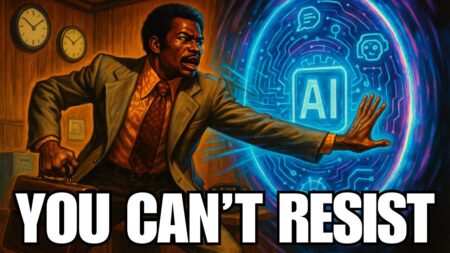Challenges in Technology Small Enterprises Encounter
Small enterprises often grapple with technological hurdles that can disrupt their operations and growth. Here are six frequent issues they encounter:
- Compliance with Regulations Small businesses must stay abreast of industry-specific laws and guidelines. These can be daunting due to their complexity and the potential for updates and changes.
- Cybersecurity Concerns Protecting against cyber threats is critical, yet small businesses often lack the resources for robust cybersecurity measures, making them susceptible to attacks.
- Effective IT Strategy Aligning IT infrastructure with business goals is challenging for small businesses, which may have a limited understanding of how to best leverage technology for growth.
- Technology Management Efficiently managing technology assets, including hardware and software, is problematic because small businesses often lack dedicated IT personnel.
- Data Management and Backup: Ensuring data is organized, accessible, and backed up can be overwhelming for small businesses that might not have the necessary systems and policies.
- Keeping Up with Technological Advancements The fast pace of technological change can leave small businesses behind as they struggle to update and adopt new technologies affordably and effectively.
Compliance Hurdles in Industry Regulations
Small businesses often encounter obstacles adhering to specific standards mandated by their industry’s regulatory framework. These requirements are intended to safeguard sensitive data and maintain quality standards. Here are some critical considerations:
- Awareness: Business owners must be well-informed about the guidelines relevant to their sector.
- Implementation: Setting up systems that comply with these regulations is essential.
- Monitoring: Continual oversight ensures adherence and updates when regulations change.
- Employee Training: Staff should be trained to understand and follow compliance requirements.
Common Compliance Areas:
- Data Protection: Laws like GDPR for those operating in or dealing with the EU or HIPAA for healthcare information in the US.
- Financial Reporting: Regulations such as the Sarbanes-Oxley Act for publicly traded companies.
Consequences of Non-compliance:
- Fine imposition
- Business operation restrictions
- Legal repercussions
- Loss of customer trust
Solutions for Compliance:
- Invest in compliance management software.
- Consult legal experts to interpret complex regulations.
- Regularly update procedures in line with changing laws.
Insufficient Technology Strategy
Small businesses often grapple with the challenge of integrating technology in a way that aligns with their strategic goals. Without comprehensive planning, these enterprises face reduced efficiency and competitive disadvantages.
- Strategic Disconnect arises when there’s a misalignment between the business’s objectives and the technological tools or services being used.
- Reactive Approaches: Many small businesses only address IT planning in response to problems, which can lead to temporary fixes rather than sustainable growth.
- Resource Allocation: Limited resources can lead to suboptimal IT investment decisions, where immediate costs are favored over long-term benefits.
Businesses may also struggle with maintaining up-to-date technology trends, which is crucial for strategic IT planning. This shortfall can prevent small businesses from effectively leveraging technology to drive their business forward.
Deficient Cybersecurity Measures
In the technological landscapes small businesses navigate, robust cybersecurity systems are non-negotiable. As modern threats become increasingly sophisticated, these protective measures must keep pace. Rather than being the sole concern of an IT department, cybersecurity is a crucial component of overall business strategy, necessitating engagement from the entire executive team.
Key Considerations for Cybersecurity:
- Establishing multilayered security protocols, including firewalls, antivirus software, and intrusion detection systems.
- Regularly updating and patching systems to mitigate vulnerabilities.
- Enforcing strict access controls and using strong, unique passwords.
- Providing ongoing staff training to recognize and avoid phishing attempts and other social engineering tactics.
- Implementing data encryption both in transit and at rest to protect sensitive information.
- Regular backups of critical data to allow for business continuity in the event of a cyber incident.

Inadequate Customer Assistance
Small businesses sometimes struggle to offer effective support to their users for the technology they provide or use. Challenges in this area can include:
- Limited Availability: With fewer staff members, there may be restrictive hours when support is available, potentially frustrating customers.
- Lack of Expertise: Small businesses might not have the resources to hire specialist support staff, leading to inadequate problem resolution.
- Ineffective Communication: There may be a gap in communicating technical issues and resolutions to non-technical users.
Inadequate Management of User Permissions and Assets
Effective management of user permissions and assets is critical for maintaining operational efficiency and safeguarding sensitive information within a business. Small businesses often struggle with this due to limited IT resources. The challenges they face include:
- Inconsistent Access Control: Ensuring employees have access to perform their duties without overprovisioning could lead to security vulnerabilities.
- Audit Difficulties: Difficulty in tracking which users have access to what information can complicate audits and compliance with industry regulations.
- Lack of Automation: Manual management of user accounts and permissions is inefficient and prone to errors, particularly as the organization grows.
- Security Policy Enforcement: Enforcing robust security policies across all user accounts consistently can be challenging, with negligence leading to potential breaches.
Insufficient Employee Technology Training
Small business owners often encounter challenges in ensuring their employees are well-versed in the latest technologies. A notable obstacle is the insufficiency of technology training, which can lead to several detrimental consequences:
- Reduced Efficiency: Employees unfamiliar with new software or hardware may take longer to complete tasks.
- Increased Errors: Without proper training, the likelihood of mistakes increases, affecting service quality and customer satisfaction.
- Security Risks: Untrained employees might be unaware of security protocols, increasing the risk of data breaches.
Strategies for Improvement:
| Strategy | Description |
|---|---|
| Regular Training Sessions | Schedule consistent workshops to keep staff updated on new technology. |
| On-Demand Resources | Provide access to online tutorials and FAQs for self-guided learning. |
| Incentivize Learning | Offer rewards for employees who complete training programs. |
| Tailored Training | Customize training to meet the varied needs of different employees. |
| Monitor Progress | Keep track of individual employee’s training progress and provide feedback. |
By addressing the training gap, companies enhance their operations and equip their workforce with the knowledge to innovate and drive the business forward effectively.
Contents



